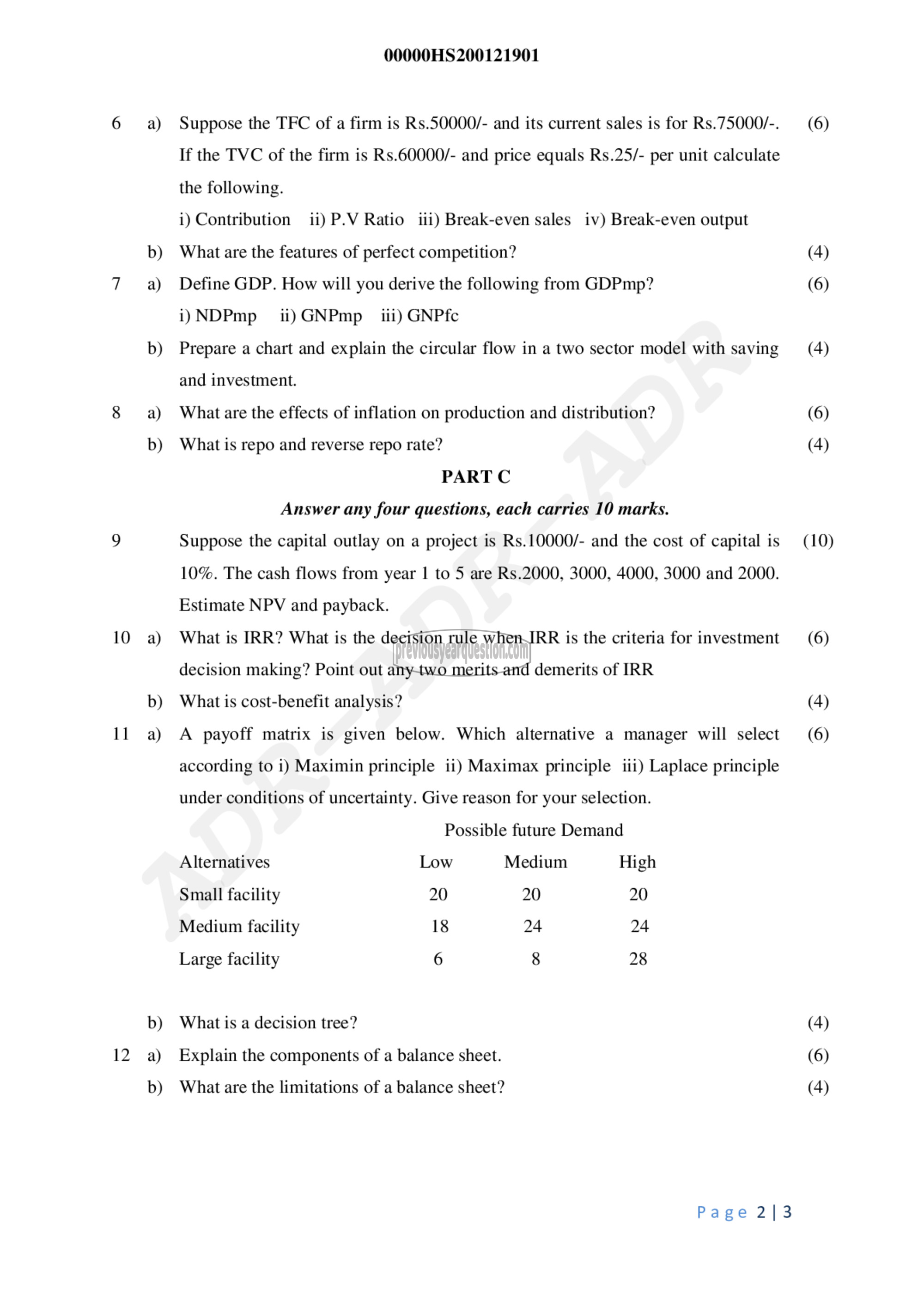APJ ABDUL KALAM TECHNOLOGICAL UNIVERSITY Previous Years Question Paper & Answer
Semester : SEMESTER 3
Subject : Business Economics
Year : 2020
Term : SEPTEMBER
Branch : MECHANICAL ENGINEERING
Scheme : 2015 Full Time
Course Code : HS 200
Page:2
b)
7 2)
b)
8 a)
b)
9
10 ஐ
b)
11 ஐ
b)
12 a)
b)
00000HS200121901
Suppose the TFC of a firm is Rs.50000/- and its current sales is for Rs.75000/-.
If the TVC of the firm is Rs.60000/- and price equals Rs.25/- per unit calculate
the following.
i) Contribution ii) ۲۰۷ Ratio iii) Break-even sales iv) Break-even output
What are the features of perfect competition?
Define GDP. How will you derive the following from GDPmp?
1) NDPmp_ ii) GNPmp_ 111) GNPfc
Prepare a chart and explain the circular flow in a two sector model with saving
and investment.
What are the effects of inflation on production and distribution?
What is repo and reverse repo rate?
PART C
Answer any four questions, each carries 10 marks.
Suppose the capital outlay on a project is Rs.10000/- and the cost of capital is
10%. The cash flows from year | to 5 are Rs.2000, 3000, 4000, 3000 and 2000.
Estimate NPV and payback.
What is IRR? What is the decision rule when IRR is the criteria for investment
decision making? Point out any two merits and demerits of IRR
What is cost-benefit analysis?
A payoff matrix is given below. Which alternative a manager will select
according to i) Maximin principle ii) Maximax principle iii) Laplace principle
under conditions of uncertainty. Give reason for your selection.
Possible future Demand
Alternatives Low Medium High
Small facility 20 20 20
Medium facility 18 24 24
Large facility 6 8 28
What is a decision tree?
Explain the components of a balance sheet.
What are the limitations of a balance sheet?
Page 2|3
(6)
(4)
(6)
(4)
(6)
(4)
(10)
(6)
(4)
(6)
(4)
(6)
(4)
